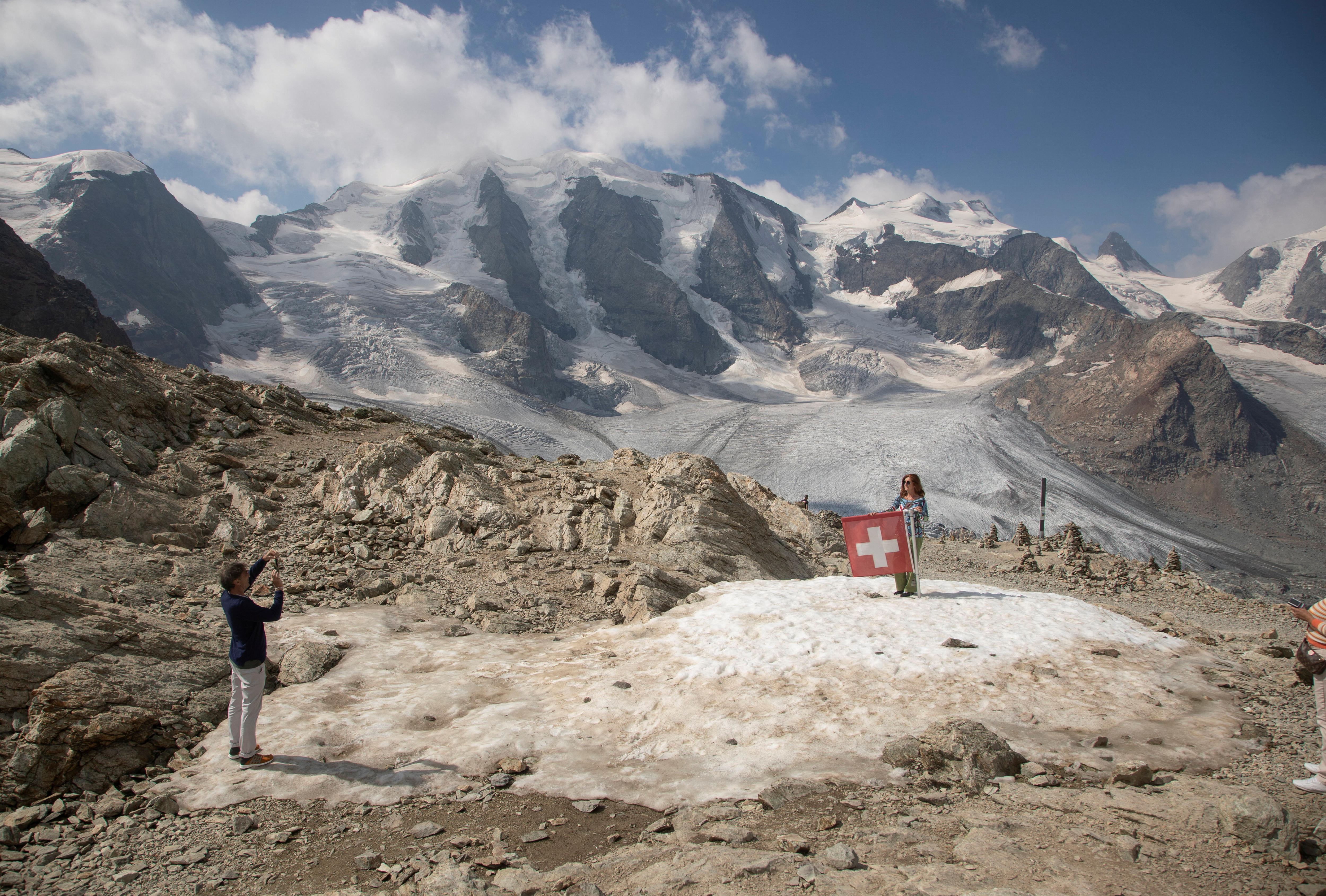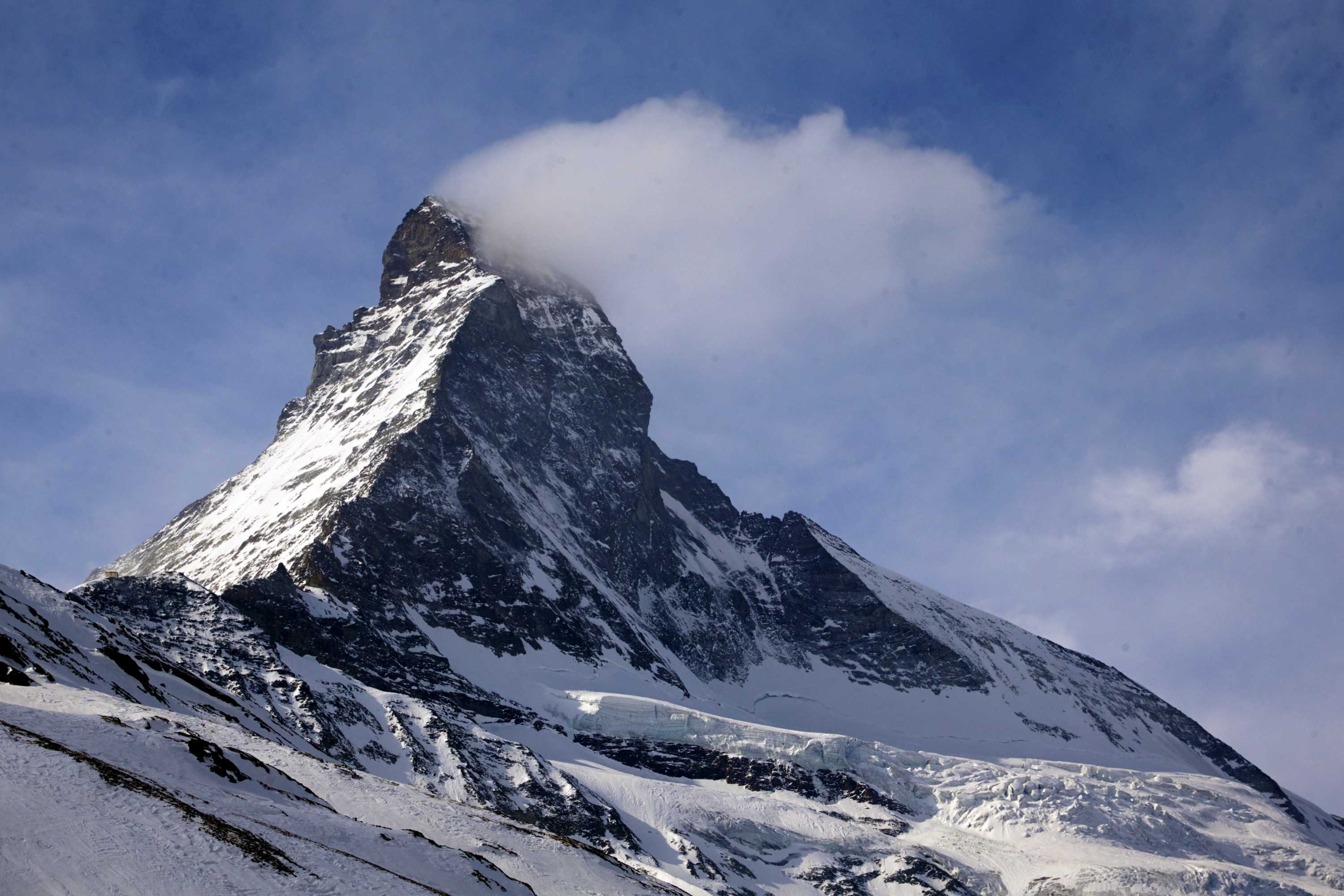Switzerland's borders are shifting as climate change moves mountains and melts glaciers
By Esther Linder
Topic:Climate Change

The Swiss Alps are renowned for their snow and ice, but it is disappearing at an increasing rate due to climate change.
The outline of a country's borders is usually a permanent affair — or if not, a heavily contested one.
But for countries that share borders of snow-capped peaks and glaciers, melting ice can change the very foundation of the Earth, including how national borders are drawn.
Last week, the Swiss government announced it had mutually agreed with Italy to redraw sections of the Swiss-Italian border to compensate for how the Alps are changing, thanks to climate change.
It's part of a growing number of nations impacted by shifting landmasses as global temperatures continue to rise.
How a melting glacier can change a border
In regions like the Alps, the border between two countries is often defined by the highest point of a mountain's ridge, known as the watershed — in this case, one side Italian, one side Swiss.
As the Earth gets hotter, the very outline of the mountains changes as melting ice and glaciers disappear, sometimes taking other permanent features like rock faces along with them.
The highest point of a mountain line can therefore shift, with the border moving along with it — sometimes by a small amount or by several metres.
This process meant the Swiss government proposed altering its national border with Italy in the areas of Testia Grigia, Rifugio Carrell and Gobba di Rollin in Switzerland's south.
"In the mountain regions, significant sections of the Italian-Swiss border are defined by the watershed or the ridge lines of glaciers, firns [compacted snow] or permanent snow," the Swiss Office of Topography said.
"However, due to glacier melting, these formations are changing, leading to a change in the dynamically defined national border."
A joint commission between Italy and Switzerland agreed in May 2023 to draft the outline of the new border, with previous tensions over the economic impact seemingly resolved.

Switzerland's border with Italy lies near the Matterhorn mountain, just one area affected by extreme glacier melt.
The newly minted border line is near the Matterhorn mountain and several major ski resorts, with over two million tourists visiting the Zermatt region every year.
Switzerland's governing Federal Council approved the updated boundary on Friday, with the changes waiting on sign-off from the Italian government before they become official.
The same meeting also saw a redrawing of the French-Swiss border, due to man-made changes to the Hermance River and a planned dam in the Swiss region south of Geneva, bordering on France.
More ice and glaciers disappearing
The Glacier Monitoring in Switzerland (GLAMOS) network said on Tuesday the summer of 2024 has seen the loss of 2.5 per cent of glacier volume across the central European country.
"The retreat of the glacier tongues and their disintegration continue unabated as a result of climate change," the GLAMOS report said.
Mattias Huss, a glaciologist at ETH Zurich who worked on the GLAMOS report, said more than 12 per cent of ice had been lost in Switzerland over the last three years.
"Three years with tremendous ice melting have obliterated more than 12 per cent of the Swiss ice volume," Dr Huss wrote on X.
"This leads to the decay and disintegration of large glacier tongues (e.g. Rhone), and the disappearance of many small glaciers."
Where else are borders changing?
Though not official redrawing of the map, Pacific island nations like Tuvalu are seeing their landmass reducing as sea levels rise.
NASA estimated this year that sea levels are already rising 5 millimetres per year in Tuvalu, and in coastal areas the ocean will rise 20 centimetres or more by 2050.
Australia and Tuvalu signed an agreement last month to offer up to 280 Tuvaluans permanent residency in Australia each year in recognition of the shrinking solid ground across the island nation.
A 2020 report by the London Institute for Economics & Peace estimated over one billion people would be displaced by 2050 as a result of climate-related environmental change, conflict and civil unrest.
Many experts say the 2015 Paris Agreement, aimed at keeping global warming below 1.5 degrees Celsius, has failed as countries across the globe make lacklustre progress on reducing carbon emissions.
By:https://www.abc.net.au/news/2024-10-03/switzerland-borders-changing-thanks-to-climate-change/104427704(责任编辑:admin)
下一篇:North Korean defector steals South Korean bus and crashes into border barricade in apparent attempt to return home
 Socceroos rescue a point
Socceroos rescue a point  Wallabies thrash Wales 52
Wallabies thrash Wales 52 Jake Paul beats Mike Tyso
Jake Paul beats Mike Tyso Live updates: England vs
Live updates: England vs  US election 2024: Donald
US election 2024: Donald  US election live: Kamala
US election live: Kamala
- ·North Korea's latest weapon agains
- ·Hezbollah says Israel 'cannot impo
- ·Inside the rise of US oligarchs and how
- ·Thailand's worst suspected serial
- ·Tabi shoes are turning heads from Holly
- ·FBI arrests Florida man planning attack
- ·Illegal immigrant gets life sentence fo
- ·Bibles, water, watches and sneakers: Do
- ·North Korea's latest weapon against
- ·Hezbollah says Israel 'cannot impose
- ·Inside the rise of US oligarchs and how i
- ·Thailand's worst suspected serial ki
- ·Tabi shoes are turning heads from Hollywo
- ·FBI arrests Florida man planning attack o
- ·Illegal immigrant gets life sentence for
- ·Bibles, water, watches and sneakers: Dona
- ·US to give Kyiv anti-personnel landmines
- ·An arrest warrant for Benjamin Netanyahu
- ·One of Vietnam's high-profile politi
- ·Shanghai Walmart Attack: A Man Randomly S
- ·South Korean police officers jailed over
- ·Cambodia publicly shames maid deported af
- ·North Korea to use all forces including n
- ·Philippines condemns China attack of Viet
- ·US adds 2 more Chinese companies to Uyghu
- ·North Korean defector steals South Korean
- ·Malaysia deports Cambodian worker for cal
- ·Rebels battle for Myanmar junta’s weste

